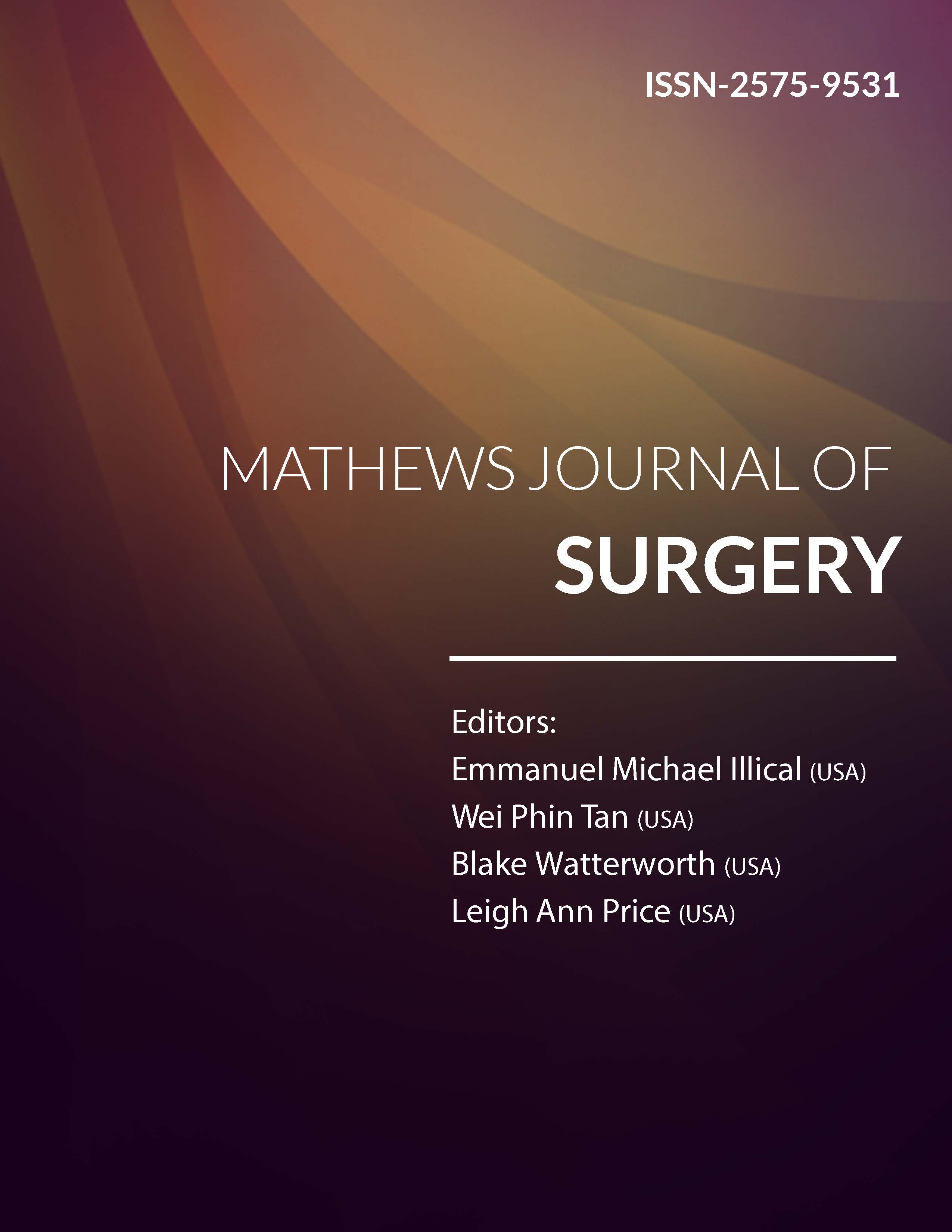
Information Links
Previous Issues Volume 6, Issue 4 - 2023
Evaluating the Clinical Outcomes of Patent Ductus Arteriosus Surgical Closure in Yemeni Patients: A Retrospective Single-Center Study
Nabeel Y Al-Madwahi1,2, Emad A Halboob1, Ali M Fadhel1, Mohammed Al-Shuja’a1, Al-Ezy M Hamoud1, Aymen F Al-Syaghi3, Yahya A Al-Modwahi1, Mohammed Najran1, Fahed Al-Fahed1, Aref Al-Hashedi1, Abdulsalam Halboup4,5,*
1Department of Vascular Surgery, Al-Thawra Modern General Hospital, Sana'a, Yemen
2Faculty of Medicine and Health Sciences, Sana'a University, Sana'a, Yemen
3Department of General Surgery, Al-Thawra Modern General Hospital, Sana'a, Yemen
4Department of Clinical Pharmacy and Pharmacy Practice, University of Science and Technology, Sana'a, Yemen
5Discipline of Clinical Pharmacy, School of Pharmaceutical Sciences, Universiti Sains Malaysia, Penang, Malaysia
*Corresponding author: Abdulsalam M Halboup, Department of Clinical Pharmacy and Pharmacy Practice, University of Science and Technology, P.O. Box13064, Sana’a, Yemen, Tel:+967774960247; E-mail: [email protected].
Received Date: December 18, 2023
Published Date: December 29, 2023
Citation: Al-Madwahi NY, et al. (2023). Evaluating the Clinical Outcomes of Patent Ductus Arteriosus Surgical Closure in Yemeni Patients: A Retrospective Single-Center Study. Mathews J Surg. 6(4):25.
Copyrights: Al-Madwahi NY, et al. © (2023).
ABSTRACT
Background: Patent ductus arteriosus (PDA) surgical closure is a standard treatment approach for symptomatic neonates unresponsive to medical therapy. However, limited data on outcomes exist, particularly in resource-limited settings like Yemen. Purpose: This study aimed to evaluate isolated PDA surgical closure outcomes, including intensive care unit (ICU) stay, extubation, hospitalization, and postoperative complications. Methods: A retrospective study was conducted from May 2017 to May 2022 at Al-Thawra Modern General Hospital. Transthoracic echocardiography confirmed PDA diagnosis and assessed pulmonary hypertension severity. Results: A total of 290 patients underwent PDA closure, with the majority being female (65.5%, n=190) and infants (65.5%, n=190). The majority had moderate to severe pulmonary hypertension (61%, n=177). Primary intervention was PDA ligation with hemoclip application (82.1%, n=238). Most patients were extubated in the ICU (78.6%, n=228), discharged on the 5th day or earlier (90.3%, n=262), and 71% (n=206) required more than 12 hours in ICU. Complications occurred in 7.2% (n=21) of the cases, primarily residual duct issues and recurrent laryngeal nerve complications. Three cases (1.0%) resulted in non-surgery related deaths. Pulmonary hypertension significantly influenced hospital stay, extubation, and postoperative complications. Conclusion: Surgical PDA closure is safe and effective in Yemen. Pulmonary hypertension significantly influences outcomes, highlighting the importance of early detection and timely PDA management to prevent complications.
Keywords: Patent Ductus Arteriosus, Congenital Heart Defects, Infants, Yemeni Patient.